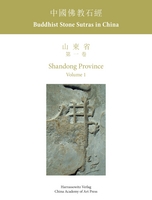|
|
more titles of the subject:
Download:
This is the first volume of an extensive series dedicated to the Buddhist stone sutras carved into stone in several Chinese provinces. The sutra texts in Shandong, dating from about 560 to 580, were cut into bare rock under the open sky. These little-known monuments are a major chapter in the history of art, in the Buddhist textual tradition, and in landscape design. The volume presents startling scripts on precipitous cliffs and massive boulders both in photographs taken at the sites and in rubbings made in ink. Not only does this corpus offer major religious texts, but it also makes available almost unknown calligraphic achievements. Among them are names of Buddhas, up to nine meters high, that were only discovered in the 1990s. All texts at a particular site, including the passages from the Buddhist sutras and the later colophons, have been completely documented, translated and analyzed. They shed new light on an exciting period in Chinese history, when the Middle Kingdom was intimately engaged with Inner Asia and even India. The foreign religion, which brought the anthropomorphic pantheon to China, manifests itself here in the quintessential Chinese medium of calligraphy.
The research has been conducted by an international team led by the renowned scholar Professor Lothar Ledderose and supported by the Cultural Authorities in China. The volumes, bilingual in Chinese and English, are directed at a wide audience. They are jointly published by Harrassowitz and the China Art Academy in Hangzhou. |






